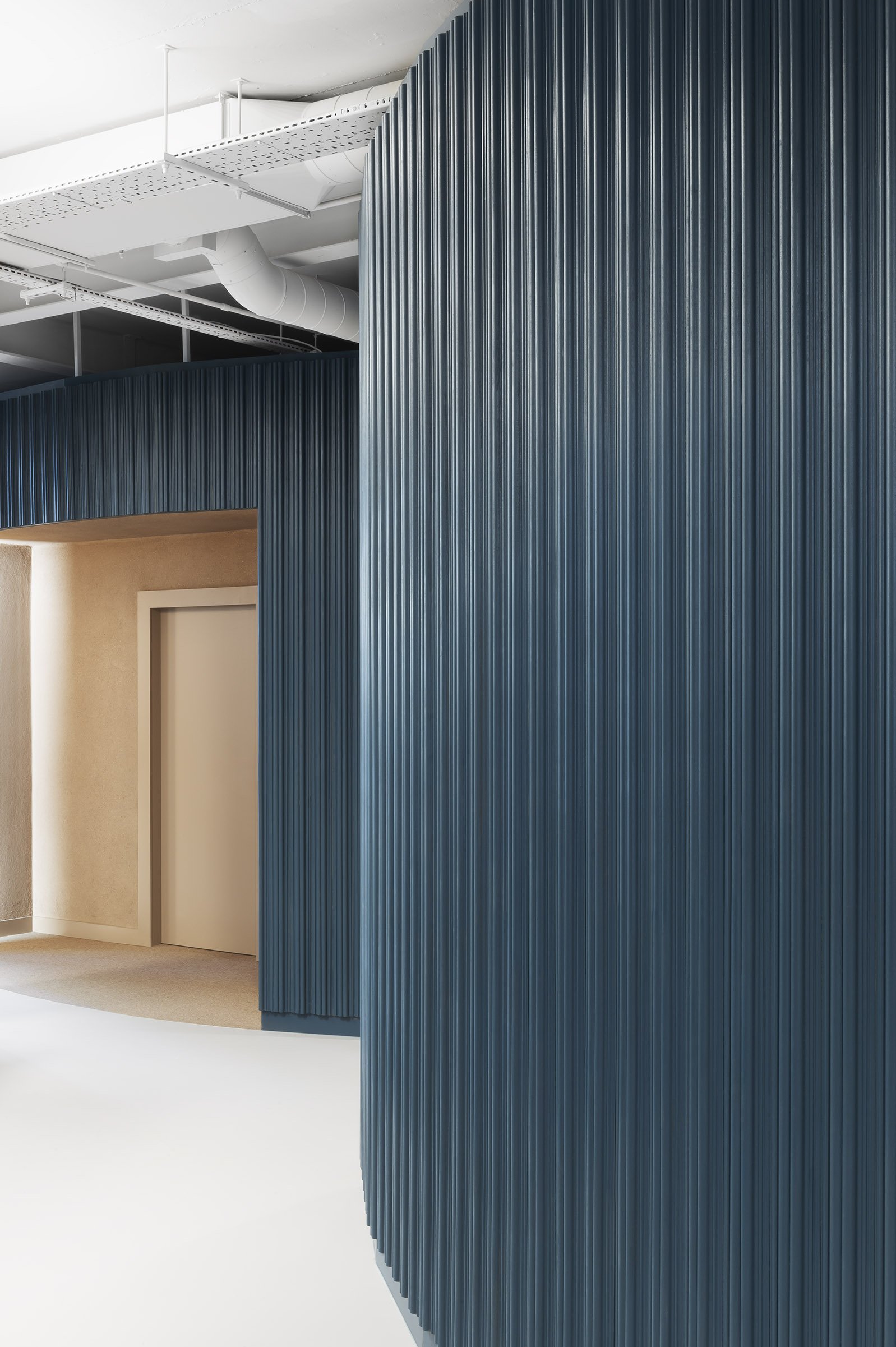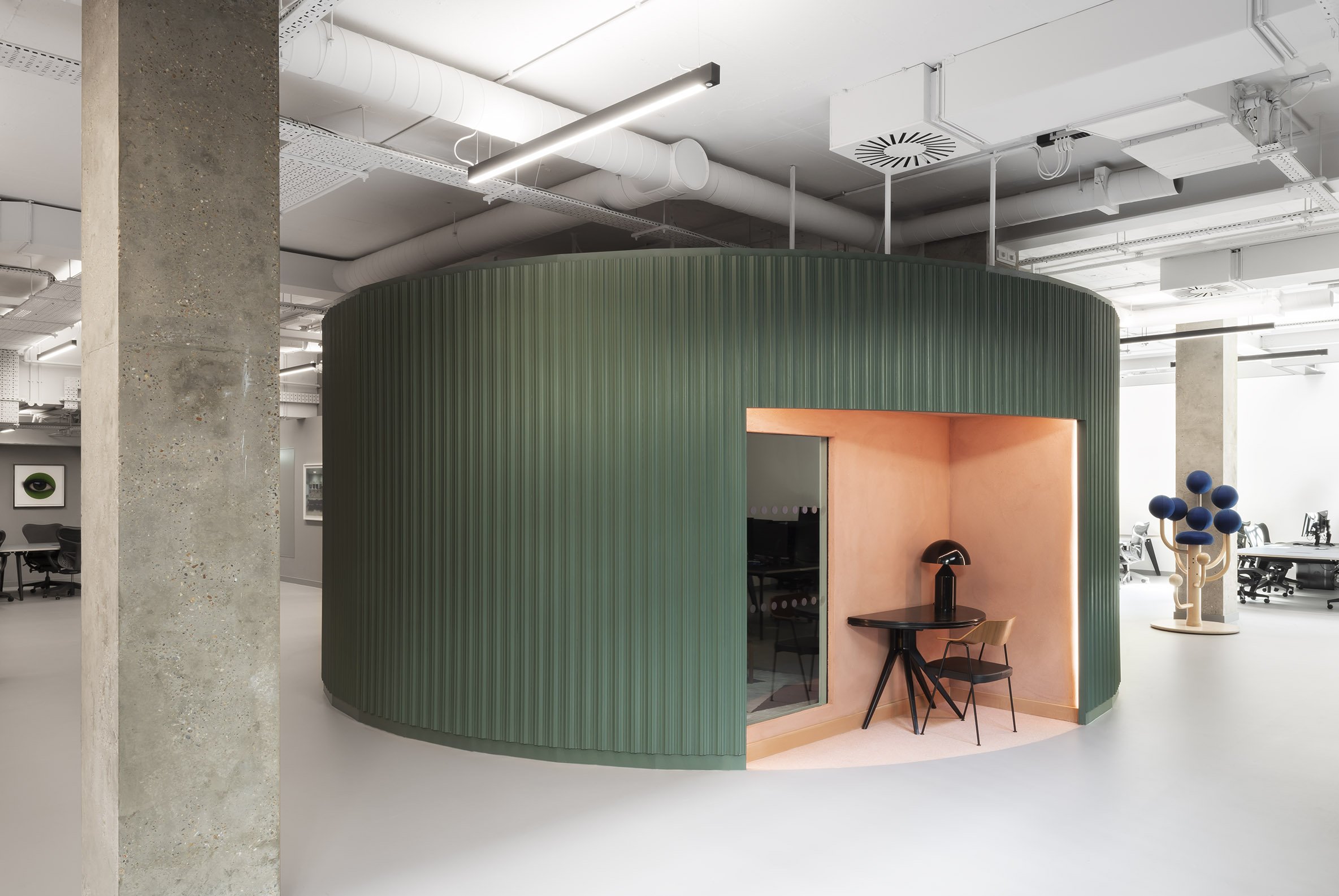
blackkite
Bureau de Change have completed a creative studio for Black Kite, an independent visual effects and design studio in East London, curating a series of intersecting and carved-out cylinders. These configure a sequence of spaces with varying degrees of privacy; informed by the heritage of the site’s industrial past.
The client’s brief called for a specific working environment; production and visual effects suites that are isolated from external sources of light and sound. Bureau de Change responded to these conditions by devising a spatial strategy conceptualised from the site’s industrial past as an Engineers and Iron Foundry.
Geometrical forms of traditional iron kilns reprise themselves in the proposal as a composition of dispersed intersecting circles, mapped across the grid system established by the existing columns. Each volume contains a rectangular void, accommodating and enclosing the production, editing, and colour suites in a controlled private environment. Smaller cylinders intersect the private working space to create transitioning thresholds.
The undulating external surface forged from the intersections was excavated at intervals, creating carved-out spaces within the volumes. These cavities function as semi-private break out spaces, each correlating to their respective enclosed working suite; creating duality of space within a singular volume, separated by a lone wall.
The interior of the cut-outs is finished with natural clay plaster, juxtaposing the sharper textures of cylinders with warm and rough surfaces. The placement of each excavation allows for a natural transition between the enclosed working areas, semi-private breakout cavities, and the central open plan working space.
The kitchen inhabiting one of the cavities is cladded in stainless steel to reflect light and act as a distinct centrepiece of the room by the entrance becoming the social core of the office. Handmade glazed ceramic tiles circumnavigate the curved recycled plastic countertop. Carefully curated furniture was selected to activate the space and create a homely and comfortable atmosphere, placed among the cavities and the negative spaces formed between the volumes.
The proposed layout offers access to a gradating degree of porosity and permeability work-space environments, incorporating and catering to preferential cultures, values, and behaviours of people. The spaces are not separated into different sectors but are connected seamlessly into one plan, offering a sense of discovery through the layers of spaces.







Photography: Gilbert McCarragher
